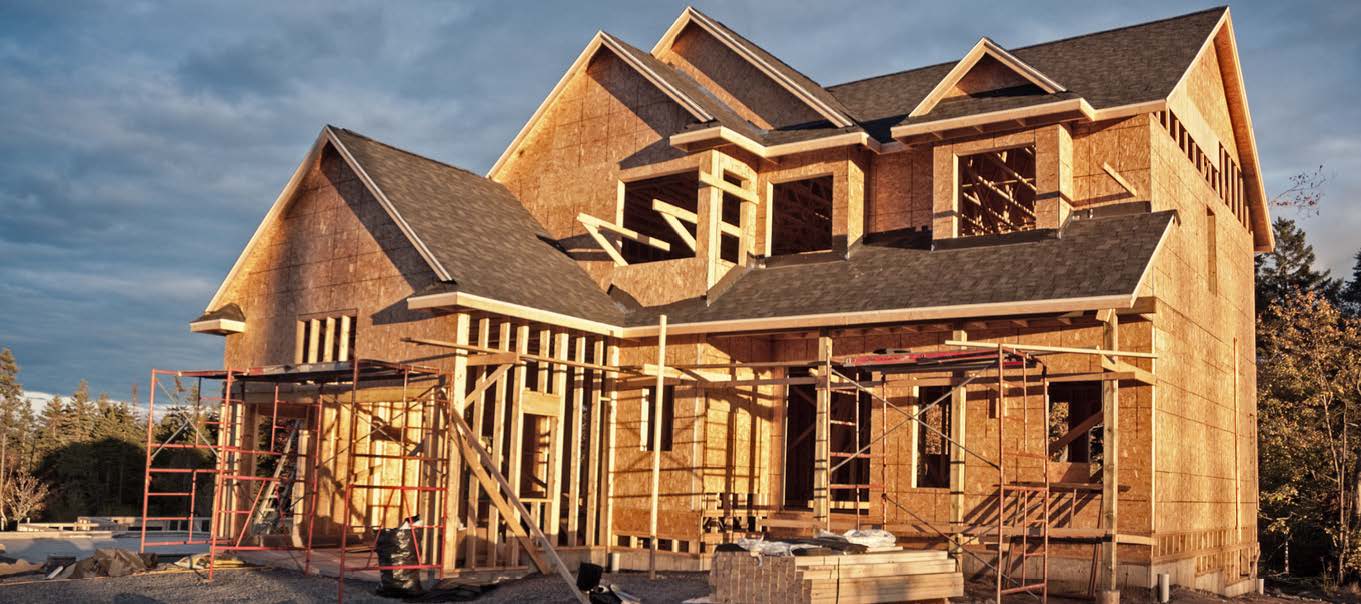Introduction
Building a new home is an exciting and rewarding milestone, but it also brings unique risks that begin the moment construction starts. Fire, theft, weather damage, or injury at the site can happen well before move-in day. To protect your investment and your financial well-being, it is essential to have the right insurance coverage in place from the start of construction through project completion. Understanding your options, whether through a homeowners policy, a dwelling and fire policy, or other specialized coverage, can help you avoid costly setbacks during the building process.
You can insure your new home during construction with a homeowners policy
One way to protect your new home during construction is to purchase a standard homeowners policy. This will cover any damage to your new house as it’s being built. The time to insure your new home is before construction begins. Although it may seem a little odd to buy insurance protection for a structure that’s still in the blueprint stage, remember that your house is vulnerable to damage during every phase of construction. For a time, you may need to carry one homeowners policy for your new home and another for your old home.
There are temporary policies available that escalate the coverage amount as the construction progresses. Be sure to purchase full homeowners coverage after the home is completed.
Liability and theft coverage are provided
A homeowners policy for your new house also provides you with liability coverage in case someone has a mishap while visiting the new home site. For example, if one of your friends trips during a tour of your dream house, his or her injuries may be covered.
In addition, your policy provides coverage for the theft of building supplies, such as carpets, lumber, and roofing shingles (although your homeowners policy at your old house may also provide theft coverage at your new home). Uninstalled finished products like ceiling fans and the kitchen sink, however, are generally covered by your contractor’s insurance.
Keep in mind that your policy will not cover your personal property at your new house until the building is secure and lockable.
A dwelling and fire policy is another option
Another option apart from standard homeowners insurance is to purchase a dwelling and fire policy. This type of policy can be purchased in comprehensive form, with property, liability, and theft coverage included. Or, you can buy a policy that covers only damage to the physical structure of your new home. A dwelling and fire policy may be a wise choice during construction of your new house if you have a standard homeowners policy on your old house that covers liability and the theft of items at the construction site.
Workers’ compensation coverage
Whenever a contractor or subcontractor steps onto your property to work on your house, you face the risk that someone may get injured and hold you liable. You can protect yourself from a potential lawsuit by verifying that the contractor and subcontractors have workers’ compensation insurance. Ask to see proof. Get a copy of your contractor’s certificate of coverage for both workers’ compensation and contractor’s liability insurance (which covers miscellaneous damage to your house by the contractor). All subcontractors should also make these documents available. You would be wise to call your contractor’s and all subcontractors’ insurance carriers to verify the information. Consult your insurance agent to be certain that the amount of workers’ compensation is adequate and that the certificates are active. All general contractors should carry proper coverage for their employees, but you may need to extend the liability portion of your homeowners policy to cover underinsured subcontractors.
What if you’re the boss?
Some do-it-yourself homeowners do most of the construction work on their homes by themselves, with a little help from their friends and family members. Other owners act as the general contractor and hire subcontractors to do the actual work. If you’re building your own home, a homeowners policy covering the new home site will generally cover any injuries incurred by your friends and family members. If you are the general contractor, you are required by the laws of most states to carry a certain level of workers’ compensation insurance to protect the people who build your new house.
Re-evaluate your coverage when construction is complete
Once the building is complete, you should re-evaluate your homeowners insurance coverage. If you opted for dwelling and fire coverage, you will need to purchase a full homeowners policy. If you bought standard homeowners insurance, make sure that you have purchased the right amount, especially if you have made alterations to the original building plan. For instance, if you added an extra bathroom, you’ll probably need to raise the amount of your coverage.
Conclusion
Securing insurance coverage while your new home is under construction is one of the most important steps in protecting your investment. From structural damage to theft and liability, unexpected events can lead to major financial losses if not properly covered. Whether you act as the builder, the general contractor, or the future homeowner overseeing the process, make sure you carry the right insurance throughout every stage. And once construction is complete, review and update your coverage to reflect the final value and features of your new home. Consulting with an insurance professional ensures you are fully protected from blueprint to move-in.
Scarlet Oak Financial Services can be reached at 800.871.1219 or contact us here. Click here to sign up for our weekly newsletter with the latest economic news.
Source:
Broadridge Investor Communication Solutions, Inc. prepared this material for use by Scarlet Oak Financial Services.
Broadridge Investor Communication Solutions, Inc. does not provide investment, tax, legal, or retirement advice or recommendations. The information presented here is not specific to any individual’s personal circumstances. To the extent that this material concerns tax matters, it is not intended or written to be used, and cannot be used, by a taxpayer for the purpose of avoiding penalties that may be imposed by law. Each taxpayer should seek independent advice from a tax professional based on individual circumstances. Scarlet Oak Financial Services provide these materials for general information and educational purposes based upon publicly available information from sources believed to be reliable — we cannot assure the accuracy or completeness of these materials. The information in these materials may change at any time and without notice.



